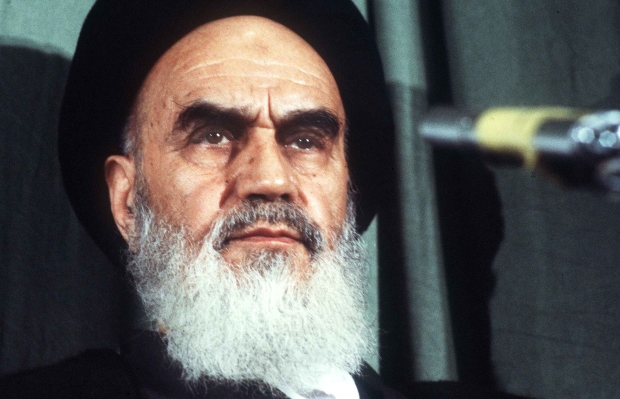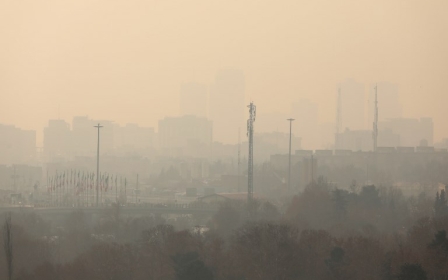Iran's troubled economy: How Khamenei’s hardline approach makes it worse

Iran's leader, Ayatollah Ali Khamenei, consistently blames "the officials" for Iran's economic problems.
"I told the honourable president [Hassan Rouhani] that informing [people] about the [improvement of] macroeconomic indicators is good, of course, if the statistics are reliable. But these numbers will not change people's livelihood in the short and medium term," he noted in one instance.
"We receive people’s complaints and experts’ opinions. Action must be taken to confront problems such as unemployment and recession in a real manner so that people can clearly see the outcome in their life. This is not the case right now.”
Factional infighting
However, what is invariably ignored by Khamenei is that he has played a significant role in shaping the country’s economic hardships by dictating policies in both domestic and foreign politics.
Khamenei has always been a major element in bringing factional infighting to the public by defending hardliners and attacking moderates and reformists. He has made hardly any effort to calm the political environment within the country.
In the heat of the mass protests against the outcome of the 2009 presidential election, during a Friday prayer, Khamenei defended Mahmoud Ahmadinejad, then a legend among hardliners but hated by the vast middle-class population in large cities. After his speech, protests became violent and several demonstrators were killed. Those events were the beginning of a process that some Iranian observers view as social collapse.
The deep state, dominated by hardliners backed by an influential social base ... is so powerful that any person who assumes the leadership of the country will not risk antagonising it
Khamenei has representatives in almost every Iranian institution, from ministries to universities, to the armed forces. He appoints key figures in the armed forces and the powerful Guardian Council, as well as the head of the judiciary. He also appoints all Friday-prayer imams in large and small cities.
Last, but certainly not least, he appoints the head of the state radio and television, which promotes Khamenei’s worldview and constantly attacks moderates, including Rouhani. There is no private radio and TV network in Iran.
These representatives and appointees come, without exception, from the most radical faction of the religious conservatives’ camp. This domination of religious radicalism is a key factor in middle-class urbanites’ disenchantment with, defiance of, and accumulated anger against, the system. These have all stripped society of its stability – as evidenced by recent countrywide protests – and become a recipe for pervasive economic hardships.
Under the existing tense climate, there has been no chance in Iran for the emergence of a stable and efficient economic macro-management system, practical long-term planning and an institutionalised system to fight prevalent corruption.
Khamenei’s foreign policy is no less harmful to the economy than his domestic policies.
Khamenei noted: “Negotiations with the United States open gates to their economic, cultural, political, and security influence… Through negotiations, Americans seek to influence Iran…"
He also said that "there are naive people in Iran who don’t understand this,” a reference to Rouhani and others who support a detente with the US.
The validity of this theory is questionable. China and Vietnam, for example, are both ruled by communist parties and are thus fundamentally in contrast to the US political system. Vietnam engaged in one of the bloodiest wars in the post-World War Two era with the US.
Both countries not only have diplomatic relations with the US: the country is now their largest trading partner.
During the nuclear negotiations, Rouhani said: “It is not written in stone that the relationship between Iran and the US must be hostile forever. One day this will change.”
Then, after the 2015 nuclear agreement, Rouhani said: “This is a first step towards productive interactions with the world… Some think that we must either fight the world or surrender to world powers. We say it is neither of those, there is a third way. We can have cooperation with the world.”
Will the next supreme leader change course?
But long as the policy of “no-talks, no-detente” continues, Iran will be under siege from American sanctions. The US administration, even by utilising the wide range of existing non-nuclear sanctions, has the option to broadly penalise non-American companies, banks and institutions working with Iran.
The mere threat of sanctions will be a sword of Damocles hanging over the heads of any foreign entity working with Iran. Foreigners will be very cautious about entering the Iranian market and will remain cautious even if they do.
“Relations with America or any other country are an instrument. The main principle is to pursue national interests… Interaction does not mean friendship. No two countries in the world are 100 percent friends.”
After Khamenei's death, the new supreme leader will be elected by the Assembly of Experts. The assembly is dominated and led by ultra-conservatives, meaning the outcome is already clear: there is no chance that a moderate will be elected as the next supreme leader of Iran.
Meanwhile, the deep state, dominated by hardliners backed by an influential social base (although last year’s presidential election showed this base represents a minority of Iranian society), is so powerful that any person who assumes the leadership of the country will not risk antagonising it. That no personality among the conservatives is strong nor charismatic enough to change the course of politics in Iran reinforces this conclusion.
Khamenei suffered from this same lack of charisma and confidence in 1989 when he was elected as Iran’s second supreme leader shortly after the death of Ayatollah Ruhollah Khomeini, Iran’s revolutionary leader.
After his election, Khamenei said: “I did not expect, even for a second in my life, what happened in the process of being elected as new leader, in which this responsibility was put on my shoulders as a humble and weak servant of Allah…
"I always considered my level [of qualifications] too low to accept not only this highly significant and crucial post, but also much lower posts like presidency and other posts, which I held during the revolution.”
Although the deep state was not yet established, Khamenei had the backing of the late Akbar Hashemi Rafsanjani, the second-most powerful man in Iran during the leadership of Khomeini and the kingmaker who played a crucial role in naming Khamenei as supreme leader.
But despite Rafsanjani's backing for the restoration of relations with the US, Khamenei lacked the confidence to risk his “highly crucial post” and abandon Khomenei’s famous characterisation of the US as the "Great Satan".
To maintain that vision, he thought that the state of enmity with the US had to be woven into the country’s political system. This will most likely continue in the post-Khamenei era.
- Abraham Nematzadeh is a political analyst focused on Iran.
The views expressed in this article belong to the author and do not necessarily reflect the editorial policy of Middle East Eye.
Photo: An Iranian woman walks past an anti-US mural depicting the Statue of Liberty on the wall of the former US embassy in Tehran in May 2006 (AFP)
Middle East Eye propose une couverture et une analyse indépendantes et incomparables du Moyen-Orient, de l’Afrique du Nord et d’autres régions du monde. Pour en savoir plus sur la reprise de ce contenu et les frais qui s’appliquent, veuillez remplir ce formulaire [en anglais]. Pour en savoir plus sur MEE, cliquez ici [en anglais].







